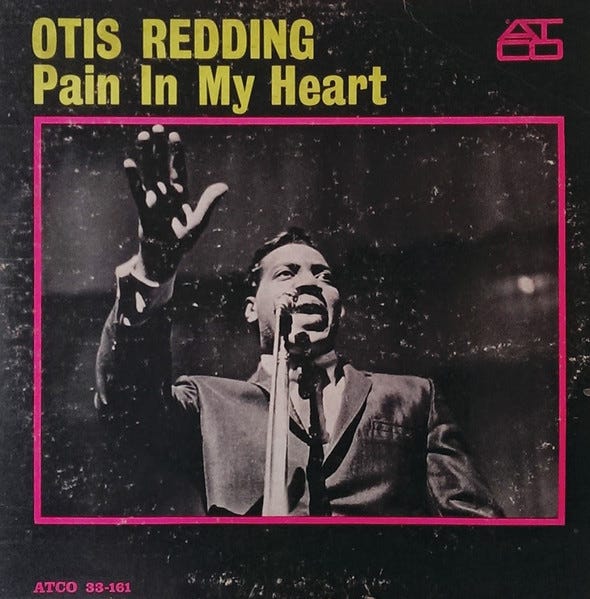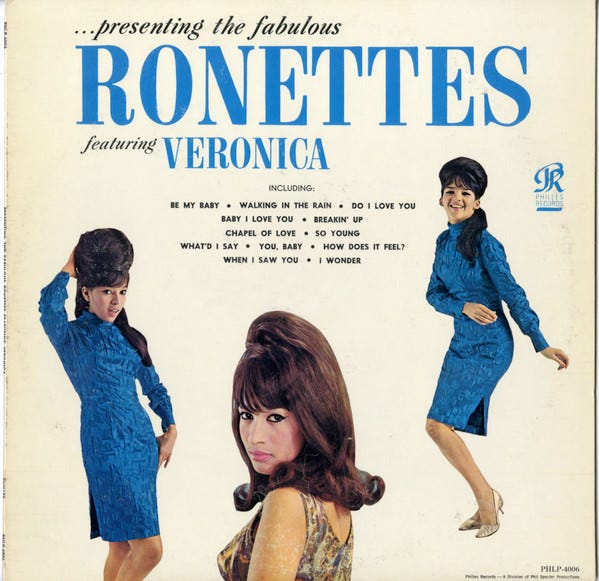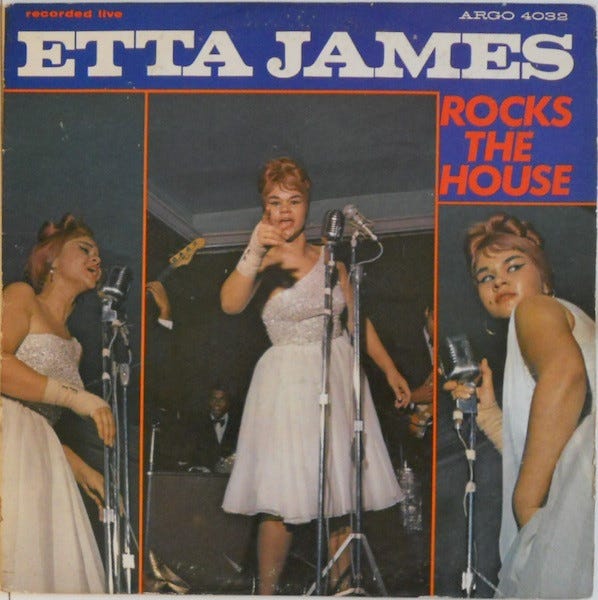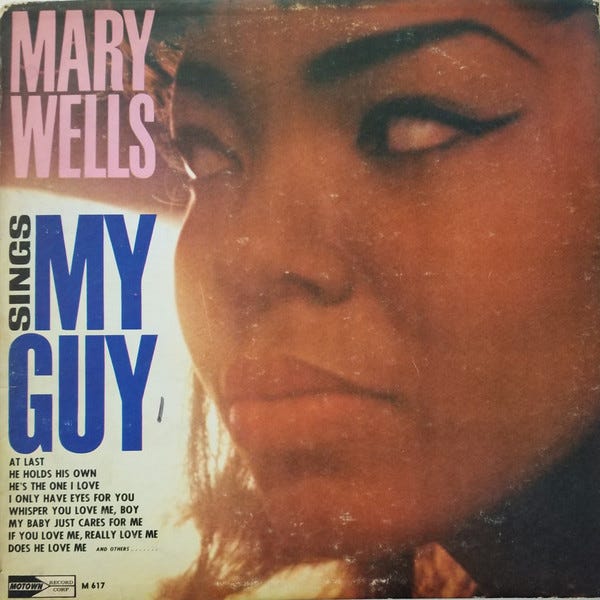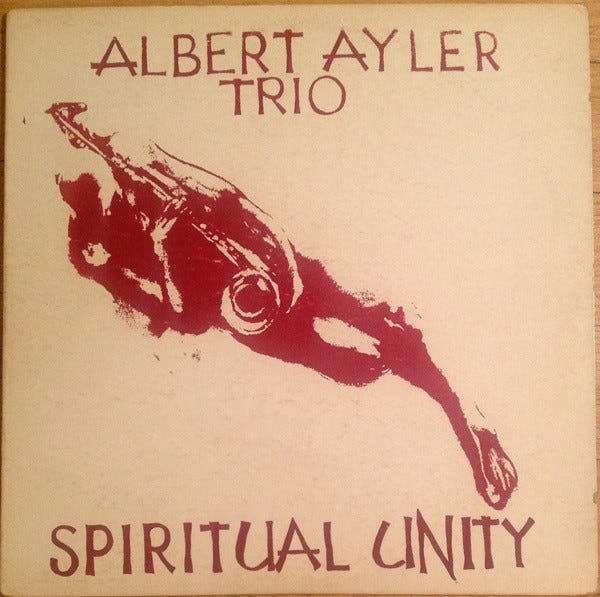Record Collecting: 1964 (Out to Lunch! thru Where Did Our Love Go)
Eric Dolphy, The Supremes, The Ronettes, Dylan, Ayler, and more
Welcome to my series on record collecting, where we select 30 albums to target for each year between 1960 and 2020. You can find the manifesto here, including links to other entries. In short, as I map my own thinking on how to invest in building a record collection, I hope it will be a useful guide in thinking about yours. The goal is a personal collection that doubles as a modern art musical library with, you know, killer tunes. Apologize in advance for the massive gaps in my musical knowledge. That’s what the comment section is for.
The year is 1964. “Louie Louie” is declared pornographic by the governor of Indiana. Top of the Pops premieres in the UK. The Beatles perform on The Ed Sullivan Show and make up 60% of the entire singles market in the United States, according to Billboard. The Supremes start their run of number one hits. Buck Owens owns the country charts with “Love’s Gonna Live Here.” Pete Townshend accidentally breaks his guitar on stage and many find inspiration. Eric Dolphy dies in Europe, reportedly because physicians, assuming he was a junky jazz musician, mistreat a diabetic coma. Sam Cooke is shot dead, while a plane piloted by Jim Reeves crashes. Fiddler on the Roof opens on Broadway. Vince Guaraldi composes “Linus and Lucy.”
See all of the 1960s selections
See all selections listed by artist
1964
Part 3
(Listed alphabetically by album title)
Eric Dolphy - Out to Lunch! (Blue Note)
avant-garde jazz
“Everyone’s a leader in this session.” So, what happens? When it is this collection of musicians—Dolphy on bass clarinet, flute, and alto; Freddie Hubbard on trumpet; Bobby Hutcherson on vibes; Richard Davis on bass; Tony Williams on drums—young but mature, conversant in the bop idiom but interested in something new, aware of the political moment, seeking art as a means of self-expansion… you get a jazz masterpiece. Dolphy is the ideology, but the players are free to pose their own theories. A textural mini-society, musical ideas presented and given consideration, reactions and counter-proposals, narratives created out of disparate paragraphs of melody and rhythm. It’s an album that rewards with time and repeated spins, letting your ears concentrate on each of the different players and then coming back around to witness the whole it creates. It destabilizes in the ways the best ideas upend our understanding of how we relate to and consume art.
Designer Reid Miles is up to the challenge and delivers with the cover. The normalcy broken by a refracted detail. What happens when our regularly ordered life is suddenly pulled in simultaneous directions? One nitpick: the clock should have five arrows.
Otis Redding - Pain in My Heart (ATCO)
deep soul
Redding debuts, at 22 years old, sounding at least two decades older, especially in terms of weathering emotional storms. His voice ragged from the onset, a perfect vehicle for the rocky terrain of Southern soul, with its chicken scratch guitars and punchy horns. Redding isn’t just an emotive voice though, he is a sensitive writer. He pens the first slew of singles: the swoon-worthy “These Arms of Mine,” the soul-baring “That’s What My Heart Needs,” and the groovy “Security,” amplified by those wonderful Stax horns. He also demonstrates his aptitude for interpretation, showing how a little grit and grease can render smooth soul tracks—Ben E. King’s “Stand by Me” and Sam Cooke’s “You Send Me”—into completely new dishes. The title track grounds Redding in the south, Allen Toussaint’s New Orleans-friendly arrangement a sympathetic shoulder for Redding’s heartbreak (though perhaps a little too close to Irma Thomas’s fantastic “Ruler of My Heart”).
Redding is testifying in the jacket photo, almost looking professorial in his presentation to the crowd. I wouldn’t mind some more youthfulness, but he never really was the “Prince of Soul,” huh? Some of us just mature faster.
The Ronettes - …Presenting the Fabulous Ronettes Featuring Veronica (Philles)
girl group pop
It’s fitting that it starts with a thunderbolt. The Ronettes are only really a flash on the pop scene. “Be My Baby” arrives in August ‘63: Hal Blaine’s gigantic drums; the relentless castanets; the full-throated, confident but fawning, eternally young-woman vocals of Ronnie Spector (the “Veronica” being featured); Sonny and Cher joining Estelle Bennett and Nedra Talley in support; the ocean of reverb. The lovingly melodramatic “Walking in the Rain” drops in October ‘64, and the decline in popularity begins. By ‘67 they are done, cut down from the inside by Phil Spector, inadvertently creating a runway for The Supremes to take off. But at least those incredible singles are collected here, a snapshot of a flash in the pan. Girl group pop at its early rock & roll best. Pure young person energy. The perfect soundtrack to teenagedom.
The hair. All that glorious hair on the album cover. Mountains of waves of hair. It almost draws your eyes away from Ronnie’s piercing stare. Almost.
Etta James - Rocks the House (Argo)
soul-blues
James in Nashville. James sans the strings and quiet studio setting. James backed by a rambunctious R&B band. James growling and hollering and shouting through a set of hits and blues classics. She is practically confrontational. That is, she would be if the crowd isn’t completely in love with her. They are nearly as loud as she is: cheering, responding, encouraging, completely losing it when all that energy is just too much to contain. And there is much energy to try to absorb. James only takes a breath for one song, her single “All I Could Do was Cry.” But slowing down allows her to amp up the drama. “At Last” brought her a whole new audience; Rocks the House shows them what they’ve been missing.
Why is the crowd in James’s control? That center photo. It is such an interesting mix of glamor—the dress, the hair, the band’s duds—and the realities of life on the road—the dull room, the taped-up mic stands. Special shout out to the ACE bandage.
Mary Wells - Sings My Guy (Motown)
pop-soul
Wells does her part to explain to young men that charisma and confidence and commitment are more important to potential partners than looks, money, clothes, whatever. “He’s the One I Love,” one of her many collaborations with a young Smokey Robinson, is a backhanded compliment of a mellow girl group pop tune, Wells’s coquettish vocals over a steady backbeat, previewing Motown’s coming explosion. “My Guy” perfects the formula, incorporating light orchestration for a bit of class, a mode The Miracles will ride to their own stardom. The tune explodes on the U.S. charts, Motown’s first #1, a key pile in bridging the color line in music, and makes its way across the pond, finding the ears of young Beatles, who fawn over Wells and invite her on their UK tour. Unfortunately, the label machinations of Barry Gordy sours Wells on her musical home. Being ahead of your time has consequences, unfortunately.
The eyebrow-eye makeup wonderfully contrasts with the soft curves of her face. The entire layout of the cover is a great use of space and color. Wells expertly finds that Mona Lisa-level of expression that allows the viewer to read exactly what they want in it. Well done all around.
Carlos Malcolm & His Afro-Jamaican Rhythms - Ska-Mania: The Sound of the Soil (Up-Beat)
ska
At the same time The Skatalites are officially coming together, Malcolm is codifying the ska genre for Jamaica. Malcolm is the head arranger for the Jamaica Broadcasting Company in the early 60s, so he needs to produce the sound of the island coming into independence. That sound is ska, a mix of Caribbean mento and calypso with American jazz and R&B. Malcolm writes the first charts for the genre, adding a bushel full of tinder to the growing flame via the radio airwaves. He puts together his own group, incorporating the sophisticated sounds of his childhood as the son of a prominent Jamaican businessman in Panama. The Afro-Jamaican Rhythms are buoyant and tight, taking advantage of the arranger’s sense of stacking timbres for greatest pop. Equal parts brass and groove, this is the early ska record to get the crowd bopping.
The typeface is the total ska look we expect, but the people pictured are not young hipsters. Instead, it almost reads as a folk performance. What we can all agree with is the way the music inspires you to dance.
Albert Ayler Trio - Spiritual Unity (ESP-Disk)
avant-garde jazz
It’s a deconstruction of what it means to play the saxophone. Others are getting to this concurrently, but Ayler demonstrates whole-heartedly—whole-soulfully—what happens when timbre is not something to achieve but something to explore. Between brief melodic frames, he twists and turns notes, stretches and bends them, crumples and unwraps them, expands and contracts them. Gary Peacock, meanwhile, keeps much closer to an expected bass sound, but discards traditional rhythm-setting for showing just how expressive the instrument can be. And drummer Sunny Murray, taking it all in, mostly rides his cymbals, filling in the middle space with washes of metal, a sort of shine Ayler and Peacock circle around. It requires faith in the listener, that there is more to learn beyond the rules, that the places it leads your thoughts are worth exploring. A celebration of the avant-garde, and a fitting launch to genre-leading ESP-Disk.
A simple silk screen for the cover, two colors, a discernible shape without the normal contours, a man with a horn in suspended state, connecting top to bottom, east to west, a unifying force. Iconic.
Dusty Springfield - Stay Awhile - I Only Want to Be with You (Philips)
blue-eyed soul
Britain's pop diva takes the stage. As a member of a folk trio, The Springfields, she travels to Nashville to record an “authentic” album during the revivalist craze. There she hears The Exciters, which inspires her to embark on a solo career focused on pop R&B. “I Only Want to Be with You” proves it is the right choice; the energetic, Shirelles-styled pop-soul tune flies up the UK charts and does respectfully across the pond as well. This U.S. LP compiles her debut—A Girl Called Dusty, released in the UK a few months prior—with her singles, creating a clearer snapshot of the blue-eyed phenomenon. It introduces Springfield’s rafter-worthy vocals and interpretation skills, notably her talent for giving voice to Bacharach-David’s moody compositions, as well as admirable covers of American soul and pop songs. The glamour icon (emphasis on the British spelling) has much to come, and she is out of the gates at a sprint.
A Girl Called Dusty has the superior jacket, but at least we get a first look at that peroxide blonde bouffant. The reliance on advertising singles rather than presenting a cohesive album statement is a misstep on Philips part though.
Bob Dylan - The Times They are a-Changin’ (Columbia)
political folk
Dylan gets serious. He comes out swinging with an anthem, one that aims to “separate aliveness from deadness.” It becomes the soundtrack to an era, even if it is a bit outside the sound Dylan is becoming known for. Already a rising cultural icon, he presents ten originals, much more austere than the monumental The Freewheelin’ Bob Dylan, circular and quietly rhythmic and hypnotizing. “The Lonesome Death of Hattie Carroll” epitomizes the approach: a gently strummed acoustic, a tale of tragic injustice taken from the headlines, a harmonica bridge, and a general tone of melancholic pessimism at the state of the country. There is no humor or absurdism on this record, two of Dylan’s greatest attributes, but it is a feat of songwriting nonetheless. Dylan doesn’t stay in this mode for long, but its influence is still felt today.
The Barry Feinstein photo on the cover is something to behold. Dylan in the Dust Bowl. It’s worth looking at the jackets of the records on either side of this one. Feinstein gets just the right angle to minimize the baby fat, his oversized shirt helping bring out the contours of his jawbone. A fitting accompaniment to the music.
The Supremes - Where Did Our Love Go (Motown)
girl group soul
The “No-Hit Supremes.” Really. That’s what Motown thought of Diana Ross, Mary Wilson, and Florence Ballard. Well, at least until the first “baby, baby” of “Where Did Our Love Go” hit the radio waves. Actually the fourth single released off this record, but the first to go number one. A Holland-Dozier-Holland classic made up of foot stomps, vibraphone, a killer baritone sax solo, and, of course, the sleek and sexy lead vocals of Ross, breathy but theatrical, pleading her way into your heart. “Baby Love” comes next, somehow a better version of the previous single, repeating the chart feat, suddenly making The Supremes the most successful Motown act to date. Still there's more: Wilson and Ballard’s perfect harmonic support, more baritone sax than you remember, “Come See About Me.” I think the ladies deserve an apology.
The young pop stars are figuring out how they position themselves best in real time on the cover. I love the green and the hair and the confused sight lines. Someone should’ve done Ross a solid and swept that bang out from between her eyebrows though.



